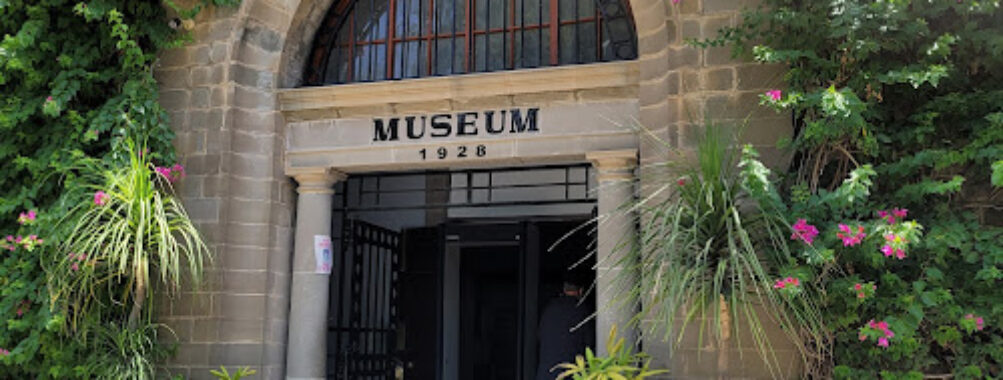
Taxila Museum
Table of Contents
Description
The Taxila Museum is one of those places that quietly pulls you into a different era. It’s not flashy or overdone, but there’s a certain weight to being surrounded by centuries-old relics that once belonged to one of the most influential civilizations in South Asia. The museum primarily showcases artifacts from the Gandhara civilization, with a strong emphasis on Buddhist sculptures, coins, tools, and everyday objects from the Kushan period. Walking through its halls, visitors get a sense of how life must have felt in the ancient city of Taxila, which was once a bustling hub of learning and trade.
Now, to be clear, this isn’t a museum where you’ll find interactive screens or modern tech-heavy exhibits. Instead, it’s more of a traditional archaeological museum that lets the artifacts speak for themselves. Some travelers might find that simplicity refreshing, while others may wish for more context or storytelling. Personally, I found the quiet atmosphere and the stone sculptures to be almost meditative. It’s the kind of place where you slow down, take in the details, and imagine the hands that carved these figures nearly two thousand years ago.
The overall experience is generally positive, though not without its quirks. Some visitors mention that maintenance could be improved in certain sections, and yes, the lighting isn’t always perfect. But the sheer richness of the collection outweighs those small drawbacks. If you’re even remotely interested in history or archaeology, this museum feels like a must-visit. And even if you’re not, there’s something humbling about standing in front of artifacts that have survived empires, invasions, and centuries of change.
Key Features
- Extensive collection of Gandhara-era Buddhist sculptures, many of which are remarkably well-preserved.
- Coins, jewelry, and pottery from the Kushan period that provide a glimpse into ancient trade and daily life.
- Wheelchair accessible entrance, parking, and restrooms, making it easier for all travelers to explore.
- A small on-site restaurant and restrooms available for visitor convenience.
- Free parking lot, which is a relief in a busy area like Taxila.
- Family-friendly environment, good for kids who might enjoy the statues and ancient coins.
- Peaceful surroundings near archaeological ruins, offering a sense of continuity between the museum and the ancient city.
Best Time to Visit
If you’re planning a trip, timing makes all the difference. The museum is open throughout the year, but the best months to visit are from October to March. The weather in this region can get quite hot in the summer, and wandering around ruins or waiting outside in the sun isn’t exactly comfortable. During the cooler months, the experience feels much more pleasant, and you’ll actually want to linger longer at each exhibit.
Weekdays are generally less crowded, so if you prefer a quieter visit, aim for a morning on a Tuesday or Wednesday. Weekends can draw larger groups, including school trips, which sometimes makes the museum feel a bit busier. Personally, I enjoyed going in the late morning when the light coming through the windows gave the stone sculptures a warm glow. It felt like the artifacts themselves were telling their stories in the sunlight.
How to Get There
Reaching the Taxila Museum is fairly straightforward if you’re coming from Islamabad or Rawalpindi, as it’s only about a 35–40 minute drive. The road is well connected, and most travelers opt for either a private car or a hired taxi. Public transport options exist, but they can be a bit complicated for first-time visitors, especially if you’re not familiar with the local routes.
If you enjoy road trips, the drive itself can be part of the fun, with views of small towns and fields along the way. For those who prefer convenience, ride-hailing services are available in the region and can drop you right at the entrance. Parking isn’t an issue since the museum provides a free lot, which is surprisingly spacious compared to what I’ve seen at other heritage sites.
Tips for Visiting
A few practical tips can make your visit smoother and more enjoyable. First, carry a bottle of water, especially if you plan to explore the nearby ruins after the museum. The on-site restaurant is handy, but it’s always good to have your own supplies. Second, photography is allowed in some areas, but always check the rules before snapping pictures. Some sculptures are sensitive and may have restrictions.
Wear comfortable shoes, because chances are you’ll want to walk over to the archaeological sites nearby—it feels incomplete to see the artifacts without also seeing where they were found. If you’re traveling with kids, prepare them with a little background story about Buddha or ancient civilizations; it makes the exhibits more engaging for them. And if you’re like me and enjoy sketching or journaling, bring a notebook—the peaceful atmosphere is perfect for jotting down impressions or even doodling a few statues.
Lastly, keep your expectations balanced. This is not a flashy, modern museum with touchscreens and augmented reality guides. It’s a place that values authenticity over presentation. Go in with curiosity, patience, and a bit of imagination, and you’ll walk away with a deeper appreciation for the history of this region. And honestly, that’s what makes the Taxila Museum so special—it doesn’t try too hard, it just quietly offers you the past and lets you decide how to take it in.
Location
Places to Stay Near Taxila Museum
Find and Book a Tour
Explore More Travel Guides
No reviews found! Be the first to review!